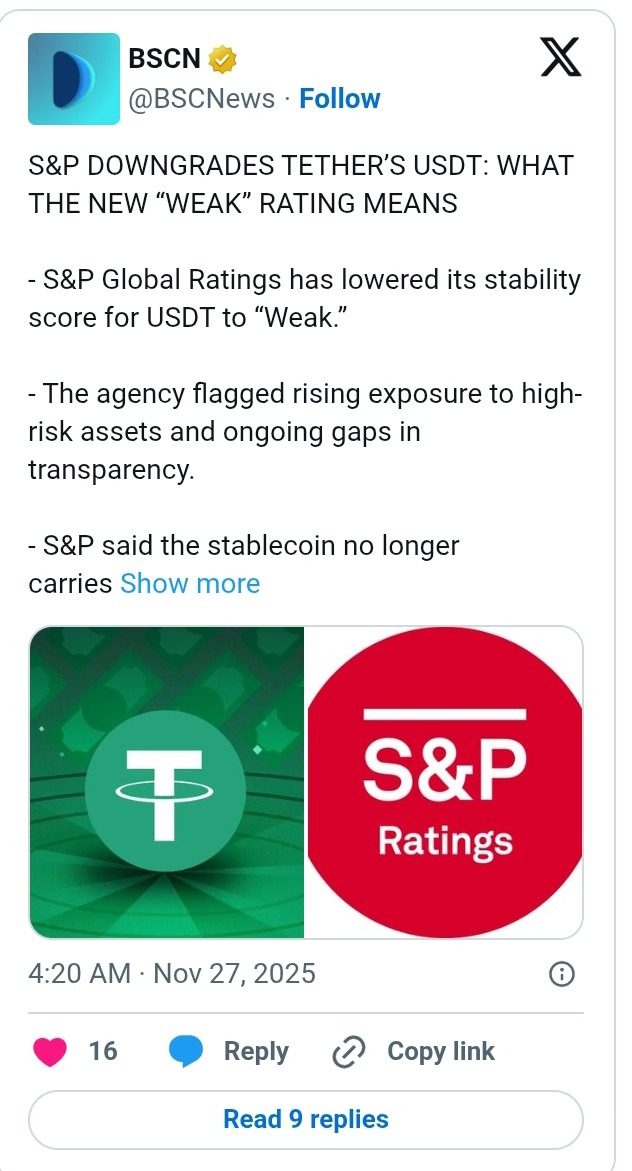- S&P Global has downgraded its rating of Tether to “Weak”, claiming its reserves have higher-risk assets.
- The assessment also noted that Tether has provided only limited information on the creditworthiness of its counterparties.
S&P Global downgraded its ratings of the world’s largest stablecoin issuer, Tether , due to an increase in higher-risk assets in its reserves. S&P Global also argued that Tether’s reserves have limited disclosure and lead to market, credit, foreign exchange, and interest rate risks.
“Tether continues to provide limited information on the creditworthiness of its custodians, counterparties, or bank account providers.”
Further examination of the report found that the assessment specifically mentioned the assets in the reserves, including Bitcoin, which represents 5.6% of the USDT in circulation.
According to the analysis, this exceeds the 3.9% of the overcollateralization margin. Technically, this level of margin implies that USDT can no longer absorb a decline in its value. A significant fall of the Bitcoin value and that of the other high-risk assets could “reduce coverage by reserves” and cause the USDT to be undercollateralized.

The company further highlighted that a significant portion of the USDT’s reserve has been invested in short-term US Treasury bills and others.
Apart from this, S&P Global noted that Tether lacks a robust regulatory framework. Additionally, it has no asset segregation to guarantee protection against the issuer’s insolvency. According to the company, these concerns contributed to the downgrade to the weakest level on the scale, which is 5. However, it stated that the assessment could improve if Tether reduces the exposure to high-risk assets.
Tether CEO Response to S&P Global
Responding to the assessment, the CEO of Tether, Paolo Ardoino, labeled it as “loathing” and stated that they will “wear it with pride”. In his post, Ardoino highlighted that this could be part of the growing propaganda orchestrated by the traditional financial system against companies that attempt to go against what he termed the “broken system.”
The Tether CEO also advised other companies not to decouple themselves from similar assessments. Also, he explained that Tether has, over the years, built an overcapitalized company without relying on “toxic reserves”. According to him, the company has managed to remain extremely profitable. He also argued that Tether is a testament to the broken traditional financial system.
“The classical rating models built for legacy financial institutions, historically led private and institutional investors to invest their wealth into companies that, despite being attributed investment grade ratings, collapsed, pushing worldwide regulators to challenge such models, the independence and objective assessment of all major rating agencies.”
Tether is seeking to launch the USAT stablecoin in the US. As mentioned in our earlier discussion, the move follows the new US stablecoin rules under the GENIUS Act. It is also seeking to expand beyond stablecoins as it explores massive funding rounds of up to $20 billion, as indicated in our earlier post.





